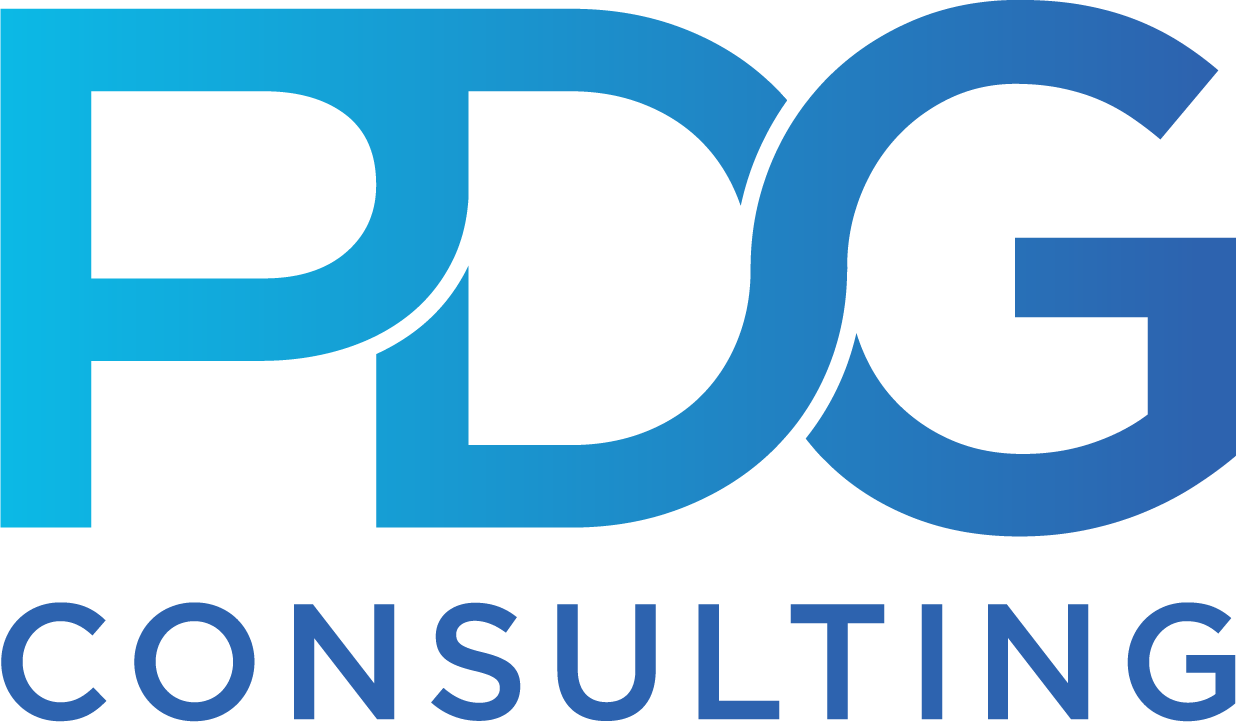Is Blockchain the next GPT?

As part of my MIT Sloane executive education, I studied Blockchain technology. When I chose the class, my pursuit was to explore practical applications for Blockchain outside of crypto currency. While taking the class, I strangely found myself acting like a college student attending University. I was eager to have theoretical discussions about the subject, often annoying people at parties or with impromptu phone calls and texts forcing Blockchain as the topic of conversation. I’m sure I acted as if I’d spent years studying the subject and thought I knew more than I did. Since I didn’t know any of my classmates, I engaged in these conversations with work colleagues and friends who humored me.
In class, I was being taught that Blockchain displayed all the signs of becoming the next GPT.
A General Purpose Technology, like the steam engine, the internet, artificial intelligence, etc. have 3 primary characteristics:
- It becomes pervasive and adopted by most sectors
- It develops and improves over time
- It catalyzes innovation in complementary technologies.
Does Blockchain check these boxes outside of crypto?
I spoke to people in the medical documents industry, in technology, banking, legal, media and entertainment, social entrepreneurship, and more. And then there were my friends in the art world who were very skeptical about the NFT craze. After several of these conversations, I started to notice a pattern emerging: outside of crypto, people in industry thought Blockchain had no practical application. My colleagues in business told me that either Blockchain had no place in their industry, Blockchain was all the hype in their industry but has yet to produce any meaningful application(s), or that the technology itself would never amount to anything.
 Here I was, searching for answers through education and input from my colleagues. On the one hand, I’m being taught that Blockchain is the next GPT. And on the other, my interviews revealed that Blockchain isn’t being adopted. Was my pursuit of a practical application for Blockchain a lost cause? Couldn’t be. I drew the only reasonable conclusion that a novice University student could draw. To quote River Phoenix in India Jones and the Lost Crusade, “Everybody’s lost but me”.
Here I was, searching for answers through education and input from my colleagues. On the one hand, I’m being taught that Blockchain is the next GPT. And on the other, my interviews revealed that Blockchain isn’t being adopted. Was my pursuit of a practical application for Blockchain a lost cause? Couldn’t be. I drew the only reasonable conclusion that a novice University student could draw. To quote River Phoenix in India Jones and the Lost Crusade, “Everybody’s lost but me”.
I started to change my focus from what could be to what is. Maybe studying the one real world use case of Blockchain, crypto currency, would provide the blueprint to future practical Blockchain applications.
Blockchain famously entered the world through an anonymous white paper called “Bitcoin: A Peer-to-Peer Electronic Cash System” published in 2009 under the alias of Satoshi Nakamoto. It’s abstract led with the statement “A purely peer-to-peer version of electronic cash would allow online payments to be sent directly from one party to another without going through a financial institution.” In his paper, Nakamoto put forward the idea of a decentralized payment system that greatly reduced the friction associated with using an intermediary for peer-to-peer transactions. The revolutionary concept introduced in this paper was a solution of how to solve the double spend problem for digital currencies: how do I make sure that the same currency isn’t used two times? The solution, “proof of work” (now known as bitcoin mining), uses cryptography, CPU, and energy to verify that transactions are legitimate and that a single currency isn’t used repeatedly. In other words, this solves the problem of digital counterfeiting.
Box 1: It Becomes Pervasive and Adopted by Most Sectors
To be a currency, the item must demonstrate some part of three characteristics: Being a store of value (like gold), a medium of exchange (like the US dollar), and / or a unit of account (again like the US dollar).
Let’s evaluate crypto currency based on these three characteristics.
Medium of exchange
The problem with the “proof of work” verification approach is that it is extremely inefficient and energy intensive. Lots of miners are trying to verify the same transactions at the same time. Whoever solves the problem first wins. But everyone who didn’t solve the problem waisted their time and energy. And, since the verifying entity is incentivized by getting a bitcoin reward for verifying the transaction and since all transactions (regardless of transaction value) require the same amount of processing power to verify, good luck getting someone to verify your Starbucks coffee transaction in less than a few days or weeks. I hope you can camp out and wait for confirmation that your coffee purchase is legitimate because there’s no intermediary to vouch for you when you leave the store. As a medium of exchange, crypto has not proven to check GPT box number 1: It becomes pervasive and adopted by most sectors.
Unit of Account
Is crypto currency a unit of account? Being a good unit of account implies price stability. If you tried to buy a loaf of bread with crypto currency in 2022 vs 2021, you’d have to pay 4 times more for that same loaf of bread. A loaf of bread is one thing. But what about using crypto currency to make loans? Celsius and Alameda created a business for just that purpose, making loans in crypto currency and using other crypto currencies as collateral. And they paid depositors well for them to park their money in accounts (9 – 13% interest). However, when prices of crypto currencies started to decrease dramatically, Celsius froze withdrawals because it was experiencing a digital run on the bank. And its loans went bad triggering contagion across the crypto currency markets. Celsius ultimately went bankrupt and took down some other companies with them. When FTX ran into problems, both Alameda and FTX went bankrupt and lost investors and customers $32 billion overnight. Over their history, crypto currencies have shown one thing for sure: their prices are volatile. Therefore, it’s hard to make the case that crypto currencies are a unit of account.
Store of Value
What about a store of value? This topic is a bit more subjective. At its peak, crypto currencies had a market valuation of $2.3 trillion. You can make the case that $2.3 trillion dollars checks GPT box 1 (becomes pervasive and adopted by most sectors). But the value of crypto currencies has decreased dramatically since its peak (falling below $1 trillion) and taken down a lot of investors and companies with it. In 2022, bitcoin lost ~2/3 of its value while gold lost 2%. And this during an inflationary environment, an environment where bitcoin was seen as the solution to inflation.
Since bitcoin has a predetermined formula for how it is created, there is no price stability. When the market is enthusiastic, the price goes up to infinity. When the market is pessimistic, the price goes down to theoretically 0.
One can argue that blockchain is struggling with its first use case: becoming a peer-to-peer version of electronic cash.
Box 2: It Develops and Improves Over Time
Can anything be more certain? Since 2009 and especially starting around 2013 / 14, Blockchain started to become one of the top technologies for research, experimentation, innovation, and ultimately investment. Blockchain became one of the main disciplines in computer science and economics masters programs. Experiments were happening around the globe. Everyone was trying to understand and improve what Bitcoin had started.
 In 2015, Ethereum was launched. Ethereum is not only a digital currency but a platform for running code. Ethereum allows you to add application code to the Blockchain that is executed upon certain triggers. Think of building a Collaborative where every lawyer, escrow agent, realtor, etc. are removed from the process, reducing friction within the system. The parties (possibly worlds away) do not trust each other, but verifiable data is provided to the Blockchain and evaluated by the application written into the chain to remit funds from one party to the next if the conditions all evaluate to true. Ethereum, an improvement to Bitcoin, does not just aim to eliminate financiers. It attempts to eliminate anyone in the transaction that causes online friction.
In 2015, Ethereum was launched. Ethereum is not only a digital currency but a platform for running code. Ethereum allows you to add application code to the Blockchain that is executed upon certain triggers. Think of building a Collaborative where every lawyer, escrow agent, realtor, etc. are removed from the process, reducing friction within the system. The parties (possibly worlds away) do not trust each other, but verifiable data is provided to the Blockchain and evaluated by the application written into the chain to remit funds from one party to the next if the conditions all evaluate to true. Ethereum, an improvement to Bitcoin, does not just aim to eliminate financiers. It attempts to eliminate anyone in the transaction that causes online friction.
In September of 2022, Ethereum transitioned to a proof-of-stake mechanism and away from its original proof-of-work mechanism.
Proof-of-stake (new) and Proof-of-work (originated by Bitcoin, the original Blockchain) are both based on consensus.
Proof-or-work is a completely decentralized system based on who can solve a mathematical puzzle first. Whoever solves the problem first wins the entire prize. Anyone can compete. It’s a winner takes all game played by masses of people around the world on a single transaction. The two big down sides are that it’s a slow puzzle to crack and that all the energy that the losers use to play the game is wasted. The upside is that it is basically full proof and requires no intermediaries.
Proof-of-stake (the new Ethereum method) is also a consensus mechanism. However, instead of everyone with a CPU being involved in the consensus formation, only Ethereum owners can participate in transaction verification. And their contribution is weighted based on how much Ethereum they stake. Proof-of-stake creates a less energy intensive and faster verification process while still solving the double spend problem.
Box 3: It Catalyzes Complimentary Technologies
While crypto currencies have catalyzed innovation in complementary technologies, some would question the benefit (or harm) of these innovations. FTX, Celsius, Alameda, Binance, and others created complementary products like exchanges, clearing intermediaries, etc. that simplified crypto investment, lending, and transaction processing. Ethereum’s smart contracts capabilities have led to applications for writing code into the Blockchain and many companies have created applications to leverage this technology. But not all innovations benefit society. Many average consumers who did not understand crypto currencies lost a lot of money utilizing these applications. Many thought that they were FDIC insured based on misleading marketing.
Blockchain’s first use case is being tested and its value called into question. Warren Buffett said “Now if you told me you own all of the bitcoin in the world and you offered it to me for $25 I wouldn’t take it because what would I do with it? I’d have to sell it back to you one way or another. It isn’t going to do anything.”
Blockchain — Down But Not Out
Crypto isn’t dead and will continue to be tested for the foreseeable future. One day, it may live up to its promise of being a frictionless currency capable of being used, stored, and transferred without the need for intermediaries. Blockchain, the underlying technology, that has so much promise and is seen a possible candidate as the next GPT, will continue to receive investments in both money and brain power. Will it live up to its potential? There’s still hope. After all, AI took decades to get there. 2022 brought a scientific breakthrough in nuclear fusion that many thought was impossible. With so much research, attention, energy, and investment being directed to Blockchain, I wouldn’t count it out just yet.
PDG’s digital transformation approach takes into account your diverse needs and spans a range of services tailored to your unique requirements:
- Custom enterprise software development
- Data management solutions
- Enterprise mobile software development
- Innovative digital technology
Clients we have helped find success with digital transformation include CBS, Sony Pictures, SESAC, 21st Century Fox, JAFRA, and DIRECTV. To learn more, connect with us today.
If you are a large enterprise company or corporation, or a small business alike, digital transformation is a core component of technology and a concept of software development we can help with. PDG Consulting can transform your digital approach and future-proof your company in a custom scope unlike any other. Give our digital transformation team a call today for a quote on your individual needs to take your business to the next level.
 Brennan Binford, Founding Partner at PDG, has been implementing
Brennan Binford, Founding Partner at PDG, has been implementing
financial, forecasting, business intelligence, and ERP solutions since 1998. He specializes in revenue and margin forecasting, tax, and learning industry specific practices. Prior to focusing on business intelligence / forecasting, Brennan built and delivered financial and ERP solutions across a wide range of industries. He has a bachelor’s degree in Engineering and Applied Mathematics from the University of Pennsylvania and is a Certified Scrum Master (CSM).
Latest
Liberty Hill and PDG: Visualizing Justice through Data
March 1, 2023
See how PDG's custom data visualization platform is helping Liberty Hill pinpoint the data needed to tell this story and fuel campaigns that aim to end the practice of arresting and incarcerating youth and putting in its place investments in youth development in our newest Customer Success Story.
Proof of Concept: Facilitating the Future of M&E Enterprises in the Cloud
Media & Entertainment,Technology,OTT
February 27, 2023
For media and entertainment (M&E) enterprises, moving to the cloud offers many benefits in future-proofing their frameworks. Learn more from our software engineers about how to properly facilitate best practices for cloud computing in today's article.
Net Positive: Why Moving from Quickbooks to NetSuite Makes Sense for IPOs
January 12, 2023
For companies now in the process of preparing for their IPO, this valuation variability offers the perfect chance to assess current operations, identify potential gaps, and put the right tools in place to ensure investor confidence. Learn more about why making the move to NetSuite may be a net positive for IPO operations in this article



